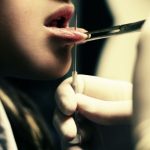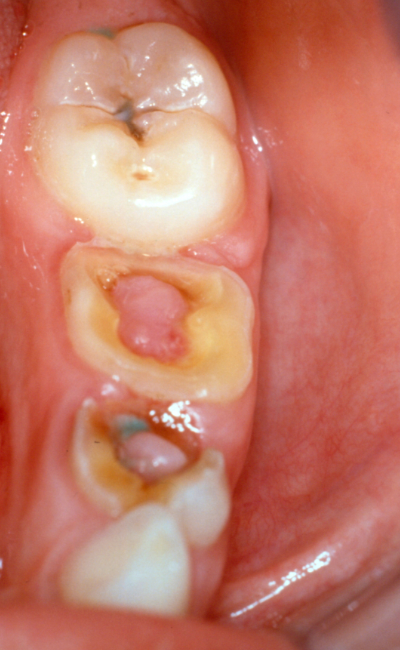Dentures rep lace natural teeth lost to injury or disease. There are various types of complete dentures. Conventional full dentures are made and fitted after the remaining teeth are removed and tissues healed. On the other hand, an immediate complete denture is fitted beforehand and inserted as soon as remaining teeth are removed. The advantage of immediate dentures is that the denture wearer does not have to be without teeth during the healing period.
lace natural teeth lost to injury or disease. There are various types of complete dentures. Conventional full dentures are made and fitted after the remaining teeth are removed and tissues healed. On the other hand, an immediate complete denture is fitted beforehand and inserted as soon as remaining teeth are removed. The advantage of immediate dentures is that the denture wearer does not have to be without teeth during the healing period.
- Getting used to new dentures can be difficult for some wearers. They can feel loose until muscles of the cheek and jaw become accustomed to them. Irritation and soreness can result, and eating can be hard at first. Additionally, speaking certain words can require practice. Because dentures can slip while laughing, talking or eating, wearers must learn to gently bite down and swallow while wearing them--all of which take practice.
- Because speaking can be difficult for some denture wearers, speech practice is advised for new wearers. Those with new dentures should read aloud as much as possible to learn to pronounce words correctly. Reading aloud can minimize the time required to recover normal speech patterns after getting new dentures.
- Eating with dentures can be difficult at first. A soft diet is advised at first to keep pain to a minimum. Patients should cut food into small pieces and eat slowly, chew on both sides of the mouth, bite using the front teeth when possible, chew up and down rather than side to side, and avoid bringing the lower teeth forward against the upper teeth to cut foods.
- New dentures almost always cause sore spots to develop; mild pain relievers and warm salt water gargles are recommended to help relieve pain and reduce inflammation. At night, dentures should be removed. This allows the soft tissues to breathe and recover. Additionally, this keeps the bones of the mouth in their usual places to ensure that the dentures are a good fit, and it also allows the dentures to soak in cleaning solution overnight for good oral
hygiene .
- The body's response to new dentures can sometimes be increased saliva flow, which will eventually decrease over time. The brain needs time to adjust and realize that because dentures are not food, the digestion process does not need to begin with the formation of increased saliva. To keep saliva flow minimal, new denture wearers are advised to take the dentures out for a period of time, and taking small sips of water are also recommended.

 Causes:
Causes: